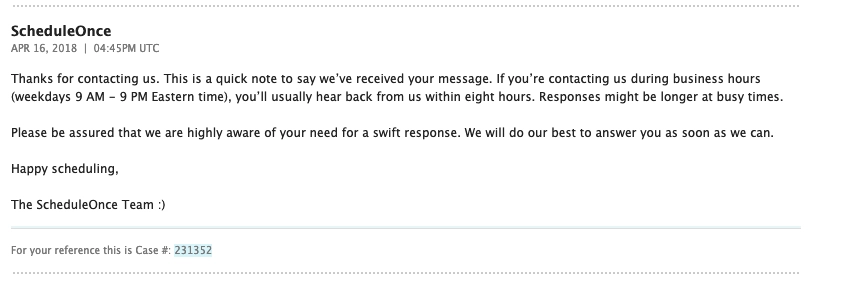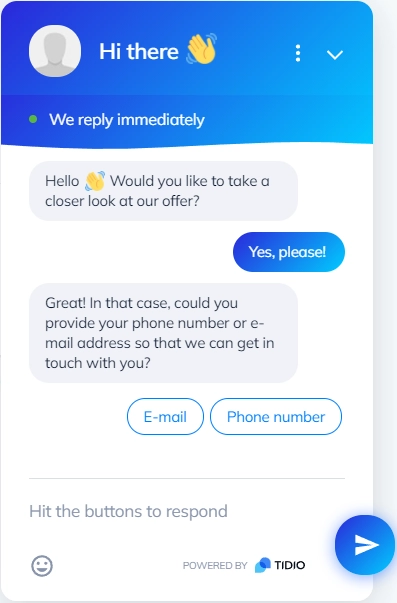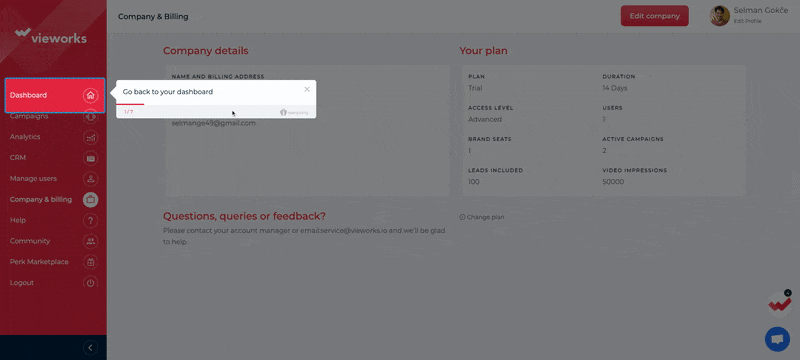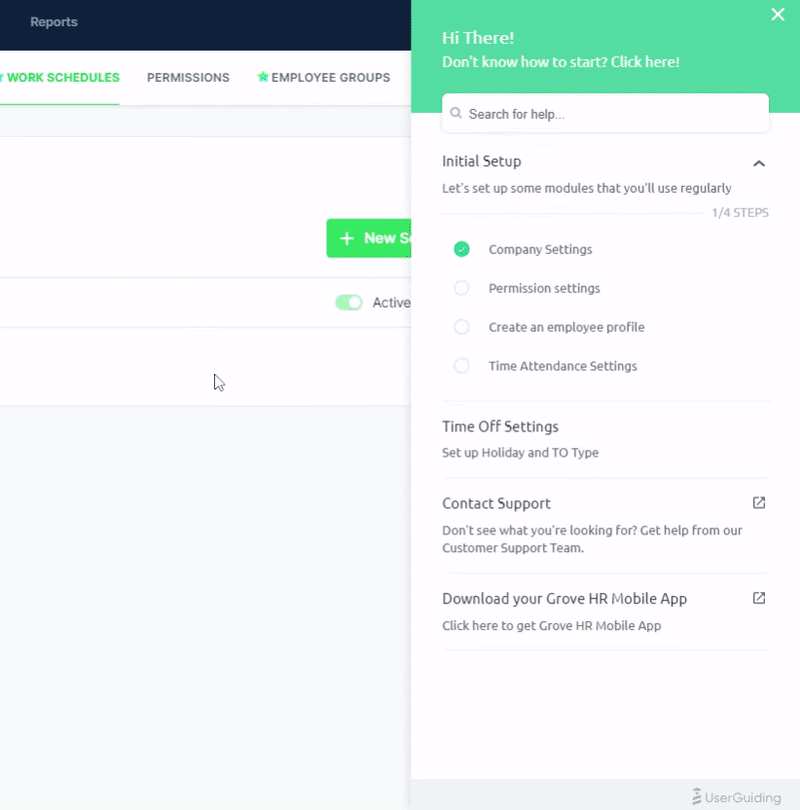

Has this ever happened to you?
David has been tasked with switching his team over from one project management system to another.
As he tries to learn the new project management software, he runs into a problem. He wants to integrate the software with his CRM, but he doesn't know how.
Frantically, David looks for a solution. The very last thing he wants to do is to send an email to a support agent.
And then he sees it.
There’s a support widget inside the app where he can find the answers to his own questions. David breathes a sigh of relief, and starts reading.
In-app support systems exist because most SaaS users are like David. They prefer to stay on your app for support, rather than using email or other channels. The more seamless the customer experience, the better!
In this article, we’ll go over some best practices for in-app support that you can implement for your SaaS app today. Let’s get right into it.
TL;DR
- In-app support allows customers to solve their own problems, without leaving your app.
- It's a great way to empower users, save money on support agents, and make the whole customer experience more seamless.
- Typical ways to offer your customers in-app support include resource centers, interactive tours, embedded videos, and contextual guidance in the form of hotspots and tooltips.
- Examples of companies that are excelling at in-app support include Grove HR, CuePath and Vieworks.
- UserGuiding can help you build in-app support elements into your product quickly and easily, without needing code.
What Do We Mean by In-App Support?
Historically, when online businesses have offered support to their customers, they’ve usually meant support by email and over the phone.

As customers spend more and more of their time online, and use more and more platforms, this expectation is changing.
A growing number of customers prefer to receive support in-app, without having to task-switch – which is inevitably distracting.
A study by Toku found that 62% of customers prefer to resolve any issues they have in-app, with 64% of customers going as far to say that they expect live chat to be offered in-app.
And indeed, live chat with a support agent or bot via a widget are the most basic forms of in-app support you can implement.
But a growing number of SaaS businesses are taking this further: even offering their customers self-service support inside their app.
As in David’s case, this could be an in-app resource center that contains answers to common questions.
Taking this logic a step further, it could also be interactive tours that highlight key features of your product in a user-friendly way, pre-empting most queries before they even arise.
Why Opt for In-App Support?
There are four main reasons to consider implementing in-app support:
- Providing a seamless and efficient customer experience. SaaS companies can ensure users find quick solutions to their problems without having to open up a new window, saving them time and effort.
- Empowering users to solve their own problems. If you can make your customer associate using your product with a feeling of confidence, that’s going to be great news for your customer retention figures! 😁
- Keeping your users inside your app for longer. This will make them more likely to perceive your product as a core part of their operations, and in turn give you offers for upselling and cross-selling using product marketing.
- Saving money on customer support salaries. The more you can build support into your app and empower customers to solve their own problems, the fewer support agents you will have to pay.
Types of Self-Service In-App Support
So what sort of in-app support options can you give your customers?
You could install a chat app to allow customers to speak with your support agents, or get initial answers from a chatbot.

But, as we said before, there’s a huge amount of value in empowering customers to seek answers to their own problems, without having to go through a support agent.
For that reason, we’ll be focusing this part of the article on self-service in-app support, more so than on in-app support in general.
Resource Centers
Does your company already have a knowledge base?
By knowledge base, I mean a repository of articles, videos, FAQs and other resources that customers can search through in order to find answers to any queries they have.
Here’s the thing: a knowledge base generally lives on your website, as a separate entity in its own right. In other words: it’s not part of your app. Your customers have to click out of your app to use it, or they have to scroll all the way down to the footer.
By contrast, a resource center lives inside your app itself.

Put another way: your resource center offers you an easy way of taking all of your support resources from your knowledge base and making them part of the customer’s in-app experience.
If you build your resource center with UserGuiding, it will integrate with your knowledge base directly. This is great, as it means that any updates you make in the knowledge base will automatically render in the resource center.
No additional work on your part, but it just means that your support information will be easier to access for your customers.
And, as you know, reducing the amount of friction in the customer experience is a great way to ensure that your customers love to use your product and stick around for a long time. 😍
Note that if you want to add in a way for customers to reach out to your agents directly, perhaps through a “Contact Us” form, you can always add that to your resource center as well, as an additional option.
Interactive Tours

Ever heard the expression “Prevention is the best cure?” 🧐
It means that the best way to deal with a problem is to avoid ever having the problem in the first place.
Well, it turns out you can apply this to in-app support, as well.
Rather than waiting for customers to have problems and questions before you give them support, it’s smarter to support them preemptively – by making your product as intuitive to use as possible.
Interactive tours are an excellent way to help users achieve their desired JTBD (Jobs To Be Done) without needing support articles, either inside the app or separately from it.
Most commonly, SaaS businesses give each new user an interactive product tour when those users first sign up for their product.
These product tours highlight the features the business believes will be most valuable to each user, based on how the business has segmented the new user.
Normally, this is done with a combination of checklists that the user needs to complete, and perhaps a tooltip or hotspot that highlights particularly important features and benefits inside the product.
You can also roll out interactive tours whenever you release a new feature that’s particularly relevant to a specific user segment, or if you have a feature that your analytics suggest is being underutilized.
Contextual In-App Guidance
What do you do if you want to offer in-app guidance about one specific piece of your UI, but the feature in question isn’t large or complex enough to warrant an interactive tour?
Simple.
You can create a tooltip or a hotspot without using code – simply by using tools like UserGuiding that function as an overlay to your product.
A tooltip looks like this:

It’s basically a small modal with a triangular arrow on it that points to the feature that you want to highlight.
You can add text that tells a user what to do, or how to use the feature.
A hotspot is even less obtrusive:

It’s a flashing dot that’s positioned next to the feature you want to draw attention to.
When the user clicks on it, it will bring up a small static infobox that can be used to guide customers.
Both these tools are excellent ways of educating customers in-app, thereby reducing the amount of questions that your support team will need to answer.
They’re also more effective than a knowledge base, because they give customers the information they need in context, without them needing to click somewhere else.
Embed Video Tutorials
Another simple way you can offer customers in-app support is by embedding videos into your product.
This can be as part of your resource center, so on a particular help page where a video would add some extra value for your customers:

Or it can be as a standalone video that’s embedded directly into your product.
Either way, your customers will appreciate this. Videos are much more engaging than text, and some people prefer to absorb information by listening, rather than reading.
Your customers can watch the support videos in their own time, and thereby feel empowered to solve their own support queries on their own schedule.
Grove HR's Rise-to-Fame in Providing In-App Support
Grove HR is an all-in-one platform that helps SMBs manage their entire HR stack.
Offering excellent customer support is extremely important in the HR industry. The market is so competitive that a customer can very easily leave and find another company that’s offering exactly the same solution, only with better customer service.
Grove HR set themselves a tough challenge: to offer their customers 24/7 customer service. But this raised some tricky questions:
- To offer 24/7 customer service, don’t agents need to be online 24/7? That sounds expensive.
- If going the automated route, how do you persuade the development team to take time away from developing the core product in order to build a customer support solution?
Grove HR created a successful in-app support system by partnering with UserGuiding.
They devised a number of interactive tours, which can be triggered directly from the resource center:

These tours are repeatable, so users can go through them as many times as they wish.
They also imported their knowledge base into a resource center. Now customers can access self-service support without having to leave the Grove HR app – simply by opening a small widget.

The Future of Customer Service
Looking at the experience of the three companies we mentioned above, it's clear that in-app customer support is the future of the support industry.
More and more companies are realizing that it's both cheaper and more effective to empower users to solve their own problems, rather than going through a support agent.
If you'd like to bring in-app support to your SaaS business, we invite you to check out UserGuiding. It requires no code to use, and you can try it out for 14 days completely free!
But don't take our word for it!

















.svg)
.svg)
.svg)
.svg)
.svg)

.svg)
.svg)












.svg)
.svg)




.png)


















